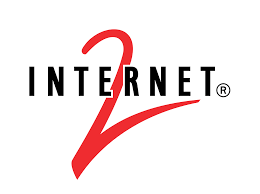
Internet2 came about due to the fact that universities were unable to buy the commercial bandwidth they needed. In the early 90s universities were among the largest data users in the country. Universities often collaborate on science research and they wanted to be able to transmit huge data files for research on things like particle physics and medical imaging. There were also supercomputers at some campuses that other schools wanted to use.
And so the universities started looking for solutions to get fast data pipes between campuses. The first attempt of this was funded by the National Science Foundation in 1995 and was called vBNS. In 1997 the effort was picked up by EDUCOM, a consortium that was organized by the non-profit University Corporation for Advanced Internet Development. This corporation changed their name to Internet2 and worked with Qwest to build and assemble a 10 Gbps network in 1998. You have to put that speed into perspective. Today there are amazingly a handful of residential customers in the country with 10 Gbps connections. But in 1998 that speed was cutting edge. Internet2 subsequently began working with Level3 and they upgraded the network in 2007 to 100 Gbps.
The organization has grown over the years. The original project was funded by 34 universities. The network has now expanded and is comprised today of 252 universities, 82 corporations that collaborate in research, 68 large government affiliate members such as federal agencies, 41 regional and state education networks and 65 other research and educational networking partners around the world.
Internet2 has also reached out through these many connections into communities all over the country. The network (through the affiliated regional partners) now connects to over 60,000 anchor institutions that include primary and secondary schools, community colleges and universities, public libraries, museums and health care organizations.
The organization has also taken on other roles. In the early years the corporation was focused on assembling the network needed to connect to institutions. The network has been assembled through long-term IRU agreements for access to fiber. The second phase of the roll-out was to form the many alliances with state and regional government networks to extend the reach of the Internet2 bandwidth.
But now the organization is focusing on other ways to benefit members. For example, it has been negotiating cheap pricing for cloud services since many of the member institutions are moving functions into the cloud. The Internet2 staff also has begun negotiating bulk pricing for other telecom services like VoIP, commonly used software, etc.
Internet2 is probably the biggest example I know of what I call a service organization. This has always been a popular model in rural America and there are numerous service organizations that operate or assist rural electric companies or rural cooperatives of all types. There are also a number of statewide fiber networks owned by independent telephone companies that are smaller clones of Internet2. The one thing I’ve always seen is that the roles of service organizations always grow over time as members find more and more things that they can do more affordably in as a group. So I would expect the Internet2 crew to be asked to tackle even more future tasks as new technologies emerge that are needed by its university members.
There is one area where Internet2 has not yet extended its cheap bandwidth – which is to rural broadband networks. One of the biggest hurdles that rural America still faces is getting access to affordable bandwidth. Often, the only place to buy bandwidth in rural areas is through premium prices paid to the telco or cable company in the area. But the Internet2 network already extends to many of these rural towns and counties. I routinely find when I visit a rural community that the only cheap bandwidth in town is at the library or at city hall. But this ‘government’ bandwidth is never made available to serve the residents of these communities.
There would be a huge social benefit if Internet2 and its affiliates would allow rural ISPs to become anchor institutions on the extensive Internet2 network. The folks at Internet2 tell me that this is something they have considered, and I hope they give it more thought. They have an opportunity to help rural America in the same way they have benefitted our schools and universities – and rural America sure could use the help.